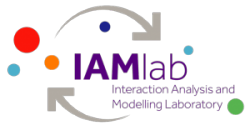DDS: Data Driven Segmentation
Web pages are typically designed to support visual interaction and so they include many visual elements. They are visually segmented into a number of blocks with different contents and roles but most of the time these are not explicitly encoded in the source code so are not accessible for machine consumption such as for screen readers or for information retrieval agents. To overcome this problem, many approaches have been proposed to automatically segment web pages but they have many shortcomings such as not being able to consider all the components of web pages such as stylesheets, scripts, and considering dynamic content, not being able to learn new visual designs and most importantly they are not driven by the understanding of the end users’ interaction which can be an issue of identifying segments relevant to the users’ task. The main objective of this project is to investigate different techniques for web page segmentation that address these limitations.
People
- Dr. Şükrü Eraslan (Post-doctoral researcher)
- Dr. Yeliz Yeşilada (Principle Investigator)
Publications
- Sukru Eraslan, Yeliz Yesilada, and Simon Harper. 2020. “The Best of Both Worlds!”: Integration of Web Page and Eye Tracking Data Driven Approaches for Automatic AOI Detection. ACM Transactions on the Web (SCI-E), 14, 1, Article 1.
- Sukru Eraslan, and Yeliz Yesilada. 2017. The Effects of Web Page Design on Distribution of Users’ Interests: An Eye Tracking Study. In Proceedings of the 11th Turkish National Symposium on Software Engineering (11. Ulusal Yazılım Mühendisligi Sempozyumu, UYMS ’17), 516-528.
